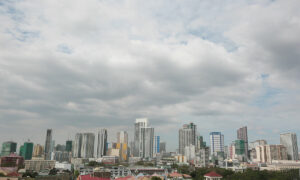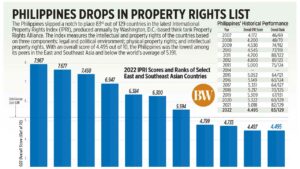Banks’ NPL ratio inches up to 3.28% in January

By Keisha B. Ta-asan, Reporter
SOURED LOANS held by banks increased for the first time in 10 months in January amid elevated inflation and rising interest rates, which brought the industry’s gross nonperforming loan (NPL) ratio to a two-month high.
Based on preliminary data from the Bangko Sentral ng Pilipinas (BSP), bad loans reached P405.138 billion in January, up by 1.6% from P398.79 billion in December 2022. Still, this is 12.2% lower than P461.66 billion a year earlier.
This brought the industry’s NPL ratio to 3.28%, inching up from the 3.16% in December but lower than the 4.14% in January 2022. This is the highest NPL ratio since the 3.35% seen in November last year.
Loans are classified as nonperforming when they are left unpaid at least 90 days beyond the due date. They are considered as a risk to banks’ asset quality as borrowers are likely to default on these debts.
“The prevailing environment of rising inflation and interest rates in the previous months of 2022 may have started to impact the capacity to pay of some consumers and firms, thus, resulting to the slight uptick in nonperforming loans of banks,” Union Bank of the Philippines, Inc. Chief Economist Ruben Carlo O. Asuncion said.
Mr. Asuncion added that the month-on-month pickup in soured loans reflects the inability of some borrowers, especially small businesses, to refinance existing loans at this time.
The Monetary Board has raised the key policy rate by a total of 400 basis points (bps), bringing the key policy rate to 6% to curb red-hot inflation.
Inflation averaged 5.8% in 2022, as food and utility prices continued to rise. In January, inflation accelerated to a fresh 14-year high of 8.7% from the 8.1% in December. It marked the 11th consecutive month of inflation exceeding the BSP’s 2-4% target range.
Based on BSP data, the banks’ loan book jumped by 10.8% to P12.348 trillion in January from the P11.143 trillion in the same month in 2022. It, however, inched down by 2.2% from P12.625 trillion in December.
Past due loans in January declined by 8.2% to P495.146 billion from P539.425 billion a year ago, but higher by 3.4% from P478.827 billion in December. The ratio eased to 4.01% from the 4.84% in January 2022.
Meanwhile, restructured loans decreased 9.6% year on year to P322.135 billion in January, from P356.449 billion. These made up 2.61% of total loans, slightly lower from 3.2% a year ago.
The industry’s loan loss reserves reached P430.481 billion in January, up by 6.8% year on year from P402.89 billion. This is equivalent to 3.49% of banks’ loans, up from 3.62% a year earlier.
The NPL coverage ratio in January stood at 106.26%, up from the 87.27% last year.
In an e-mail, ING Bank N.V. Manila Senior Economist Nicholas Antonio T. Mapa said the BSP’s aggressive tightening and high cost of living is making it more difficult for borrowers to service their debt obligations.
“Conditions at the start of 2023 (were) more challenging which could mean we (may) see a sustained increase in nonperforming loans until we see some relief in terms of borrowing costs and or price pressures,” Mr. Mapa said.
Mr. Asuncion also expects a slight rise in NPLs in the first half this year before easing in the second half due to a “potential pivot” in monetary policy.
BSP Governor Felipe M. Medalla earlier said the central bank might deliver two more rate increases at its March 23 and May 18 meetings, before pausing its tightening cycle.
The BSP expects inflation to average 6.1% this year, before easing to 3.1% in 2024.




